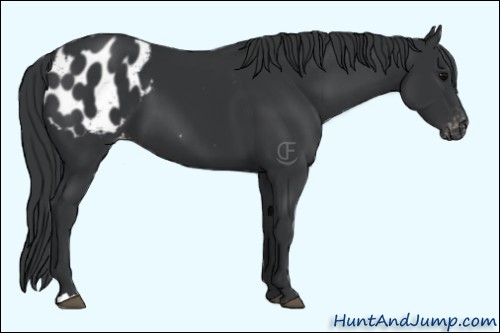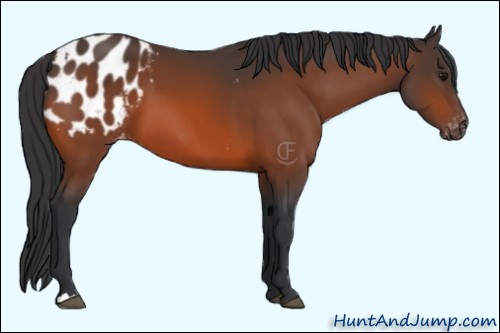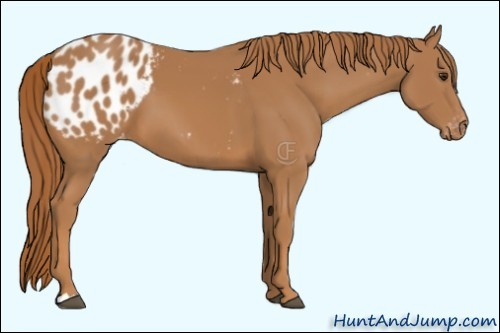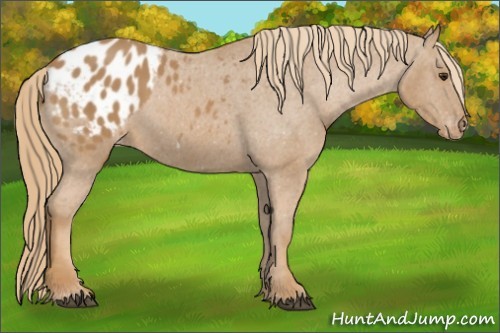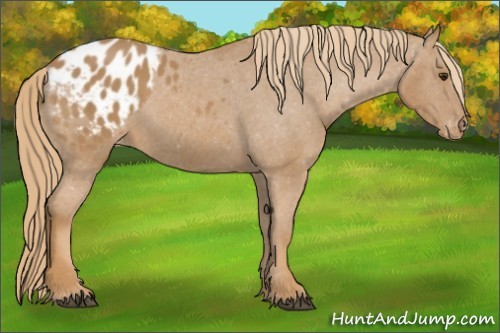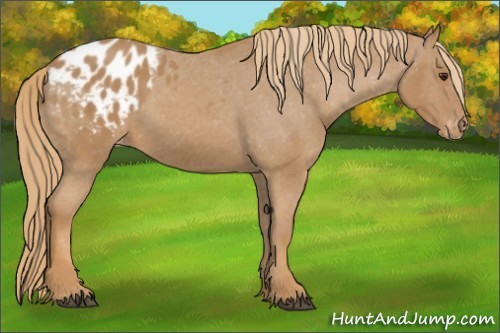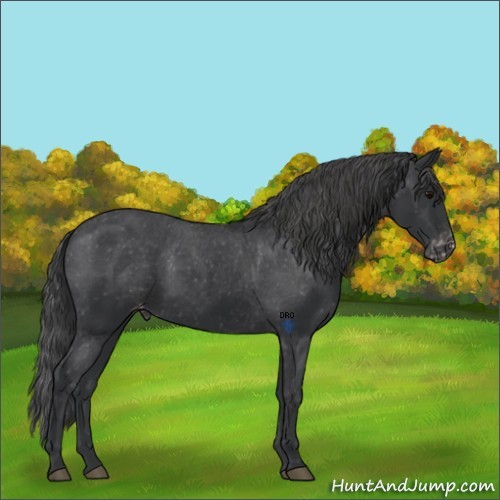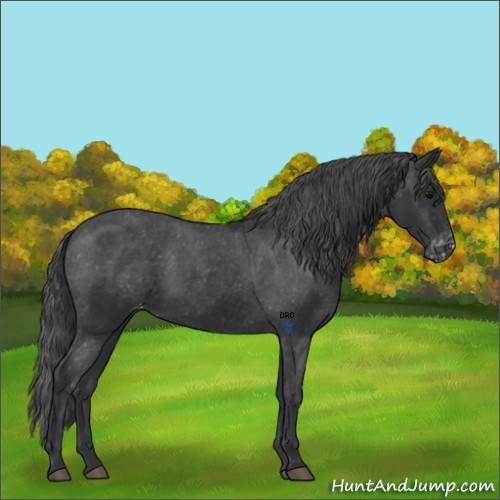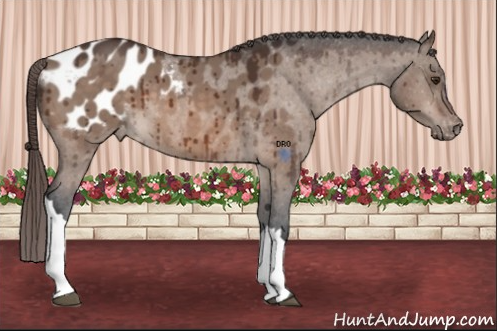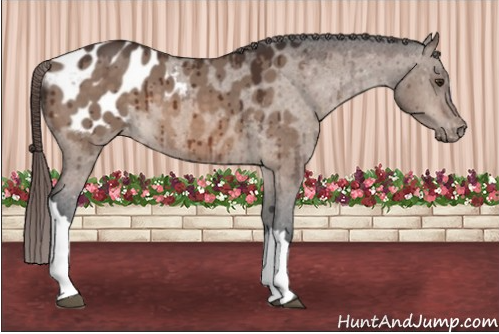Interactions of Appaloosa Spotting with Other Genes
Appaloosa Spotting Genes react with Non-Appaloosa Genetics, making them a little hard to predict and breed true. However this article is here to help you better understand how things like Pigment Density can produce larger spots.
Proposed Talking Points
- In Game Vocabulary
- How Do Appaloosa Genes Interact with Non-Appaloosa Genes
- Interactions of Appaloosa Spotting and Gender
In Game Vocabulary
In Game Vocabulary
Base Color
Pigment Density
Pinto
Shade
How Do Appaloosa Genes Interact with Non-Appaloosa Genes
Appaloosa Spotting + Black & Red Pigment
Appaloosa Spotting + Black & Red Pigment
|
Black LP/-. PATN1/-, Sty/Sty, DP/DP |
Bay LP/-. PATN1/-, Sty/Sty |
Chestnut LP/-. PATN1/- |
Pigment density (i.g., how dark a color is), can alter the expression of Appaloosa Spotting Genes by changing the rate they Varnish, or modifying spot size. On a scale of most dense to least dense, we have Black being the most dense, then Bay, followed by Chestnut being the least dense. With the addition of Darkening Genes, we can modify spot size even on Black coats.
| Rate of Varnishing | Spot Size | |
| Black | Slow | Larger |
| Bay | Medium | Average |
| Chestnut | Fast | Smaller |
The chart above illustrates how the horses Base Color can influence Varnishing as well as Spot Size. It is important to note that Varnishing and Spot Size are independent of one another.
Appaloosa Spotting + Darkening Genes (Sty, Sty+ and DP)
Appaloosa Spotting + Darkening Genes
Currently there are two genes that cause Pigment to darken, they are Sooty (Sty and S+) and Dense Pheomelanin (DP). These genes can work individually, or combine together to increase the range of Shade and Spot Size.
Sooty (Sty and S+): Darkens a horses coat, and can also increase Spot Size, even in Black Based horses. Sooty + also darkens the coat, but breaks up the pigment to produce heavy dappling.
Dense Pheomelanin (DP): Increases the production of Red Pigment, and can also increase Spot Size, even in Black Based horses.
 |
 |
 |
|
 |
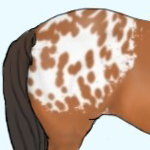 |
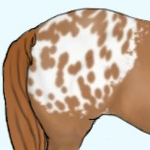 |
|
 |
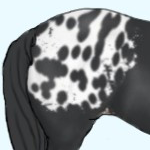 |
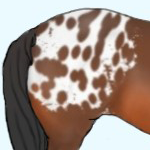 |
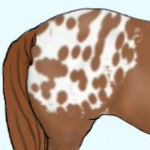 |
 |
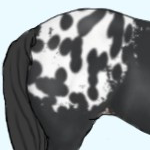 |
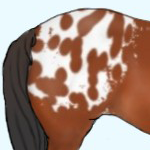 |
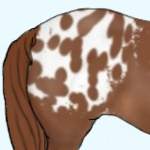 |
 |
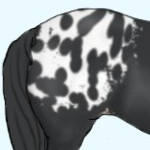 |
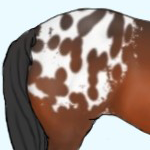 |
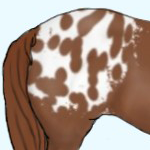 |
 |
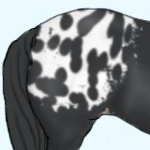 |
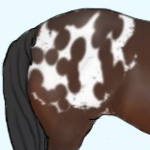 |
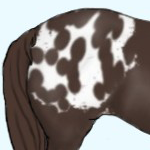 |
 |
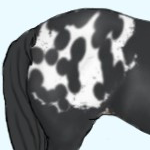 |
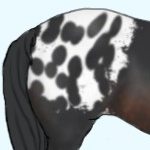 |
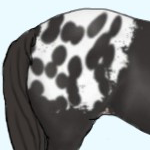 |
The chart above illustrates how the horses Base Color and Darkening Genes can influence Spot Size. It is important to note that these Genes work on Black Based horses as well, even if they are not visually seen.
Sooty Plus (S+) and Spot Size
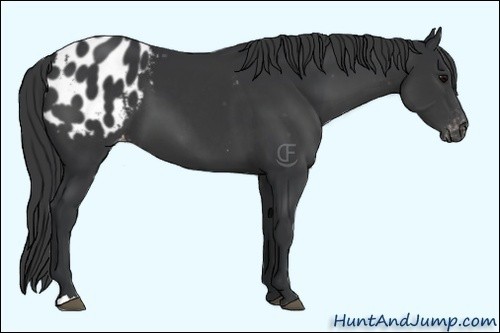 |
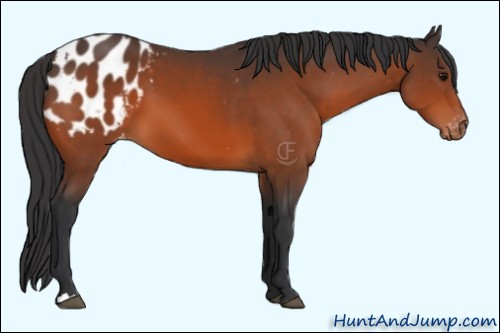 |
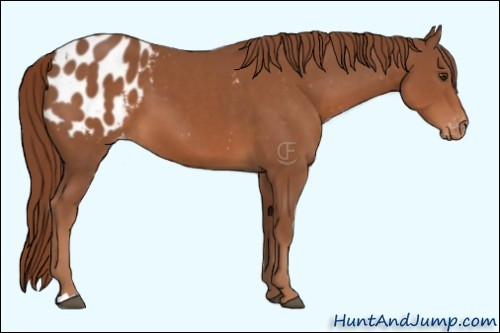 |
All three horses above are LP/-, PATN1/-, S+/S+. While Sooty + changes the shade of a horse, it can also creates larger Spots.
Appaloosa Spotting + Pigment Density Regulator (Bl)
Appaloosa Spotting + Pigment Density Regulator (Bl)
Currently Pigment Density Regulator (Bl) does three different things in the game:
- Reduces the amount of White from Pinto Related Genes
- Adds freckling to White Pinto Related Patterns
- Deepens the Red in the Base Color
Of these three things, the only one that affects Appaloosa Genes is the deepening of Red. It is a very minor change, unlike Sooty and Dense Pheomelanin.
|
Chestnut + No Bl |
Chestnut + Bl/- |
Chestnut + Bl/Bl |
Pigment Density Regulator (Bl) changed the Shade of the Chestnut horse with each copy of Bl. Because it was Darkening the coat, the effect of Varnishing was also reduced (more Varnishing with no Bl).
Check out Study #4: Appaloosa Spotting + Pigment Density Regulator (Bl) to see more examples of Pigment Density Regulator and Darkening Genes.
Appaloosa Spotting + Lightening Genes
Appaloosa Spotting + Lightening Genes
Cream/Pearl/Sun/Sno
Dun/Non-Dun
Champagne
Silver
Mushroom
Appaloosa Spotting + Pigment Removal
Appaloosa Spotting + Pigment Removal
Grey
Appaloosa Spotting + Other Genes
Appaloosa Spotting + Other Genes
Flaxen
Pangare
Interactions of Appaloosa Spotting and Gender
Interactions of Appaloosa Spotting and Gender
Appaloosa Varnishing will have different expressions between Mares and Stallions, with Mares varnishing a little faster than Stallions.
|
Stallion showing less Varnishing |
Mare showing more Varnishing |
|
Stallion showing less Varnishing at 14 yo |
Mare showing more Varnishing at 14 yo |
This information was compiled by Cheshire Farms on the Bluegrass Server and is current as of November 26, 2023.
Special thank you to Ammit and Cheshire Farms for contributing photos to this article.

